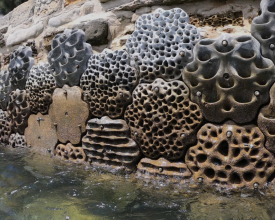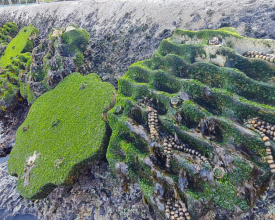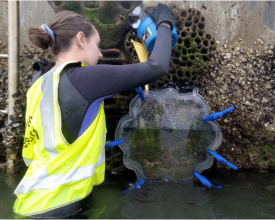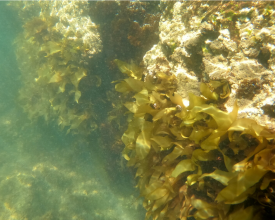
Malecones vivos: devolver la biodiversidad a las infraestructuras costeras
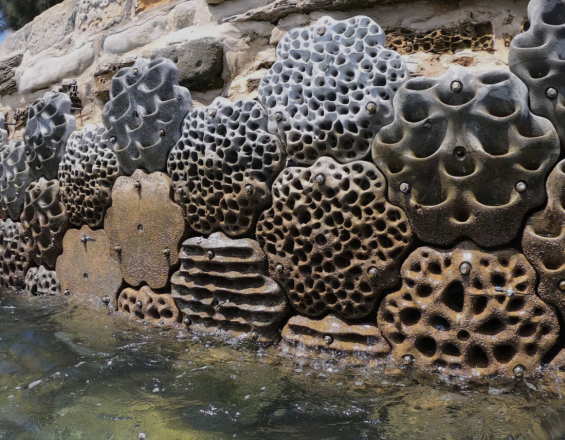
En todo el mundo, la urbanización está sometiendo a los hábitats marinos y costeros a una presión cada vez mayor. Los diques son esenciales para la protección del litoral, las actividades recreativas y la generación de energías renovables, pero a menudo carecen de la complejidad estructural necesaria para albergar una rica biodiversidad. El proyecto Living Seawalls, fundado en Sydney (Australia), se basa en la investigación marina para diseñar y producir "baldosas de hábitat" modulares que imitan la superficie viva de las plantas y animales marinos. Las baldosas pueden fijarse a infraestructuras costeras para facilitar la colonización de especies intermareales como ostras, percebes, algas y mejillones. Estas especies inician el crecimiento de un ecosistema proporcionando alimento y hábitat a las especies marinas y manteniendo la calidad del agua. En todo el mundo se han instalado más de un millar de paneles que aportan beneficios tangibles a los ecosistemas marinos locales.
Impactos
Los proyectos de Diques Vivos aumentan la concienciación sobre el impacto de la expansión urbana en la biodiversidad de nuestros océanos. El proyecto Living Seawall ofrece una solución ejemplar para remediar el impacto ambiental de la construcción marina generalizada y el rápido declive de la biodiversidad marina.
En términos de impacto ecológico, después de dos años, las baldosas de hábitat ya albergan un tercio más de especies que los diques marinos desnudos que habían estado allí durante décadas. Los paneles contienen una diversidad y cantidad de especies similar a la de los arrecifes rocosos naturales cercanos. Se han encontrado más de cien especies diferentes de invertebrados y algas, y más de treinta especies de peces utilizan estos nuevos ecosistemas. El diseño modular permite adaptar los paneles a cada tipo de emplazamiento, y las baldosas pueden modificarse en función del ecosistema local. Hasta ahora se han diseñado diez paneles de superficie diferentes que imitan diversas características de la costa, como un arrecife de ostras, las raíces de un bosque de manglares y los "dedos" de una estructura de esponjas. Los paneles se construyen específicamente para proporcionar hábitat a las especies autóctonas.
Con la vista puesta en el cambio climático, las superficies desnudas y sin rasgos, como los diques, ofrecen poca protección frente a las altas temperaturas. En los emplazamientos piloto, las baldosas de hábitat redujeron las temperaturas superficiales hasta 10 grados, lo que demuestra que el proyecto es también una oportunidad para la adaptación climática de la vida marina.

